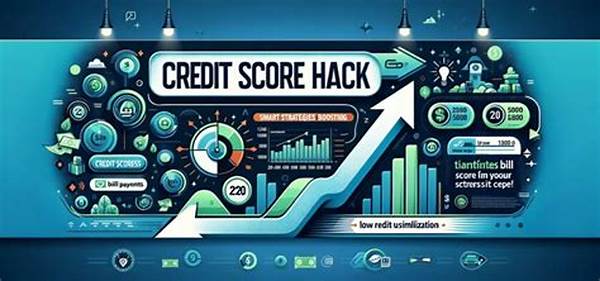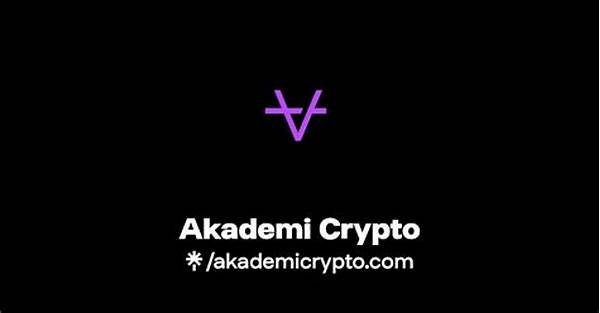Crypto Vs Traditional Banking Pros And Cons
Crypto vs Traditional Banking: Pros and Cons
Imagine waking up in a world where your finances are controlled entirely by lines of code rather than a traditional bank. Welcome to the digital economy, where cryptocurrencies are setting the stage for a new era in financial transactions. The debate on “crypto vs traditional banking pros and cons” continues to gain momentum as the cryptosphere offers innovative solutions while traditional banks stand as tried and tested institutions. This fascinating clash of financial titans presents unique opportunities, challenges, and insights into the future of money.
Read More : Why Credit Utilization Ratio Matters Most
Cryptocurrencies, which burst onto the scene in the late 2000s, have revolutionized the way we think about and interact with money. At their core, they provide a decentralized network where transactions are secure, transparent, and independent of central authorities. Meanwhile, traditional banking has established itself over centuries, providing consumers with stability, trust, and a network of financial services that are deeply ingrained in our daily lives. As these two systems collide, consumers find themselves at a crossroads, pondering the best way to manage their finances. Is it time to go digital, or does the comfort of a brick-and-mortar bank still hold appeal?
The crypto revolution promises autonomy, lower transaction fees, and the allure of rapid value appreciation. But before you ditch your savings account in favor of the latest coin craze, consider the potential risks and volatility associated with cryptocurrencies. At the same time, while traditional banks may not offer the same thrilling prospects, they deliver consistency and government-backed security. How do you choose which path to follow in this “crypto vs traditional banking pros and cons” narrative? Let’s delve deeper and explore the particular advantages and disadvantages offered by these financial fronts.
The Upsides and Downsides
In understanding “crypto vs traditional banking pros and cons,” let’s first examine cryptocurrencies. The primary allure of cryptos lies in decentralization, offering a way to store and transfer wealth without an intermediary. You are your own bank. This autonomy appeals to many, considering the lower costs associated with eliminating banking fees and cross-border transaction charges. However, on the flip side, cryptocurrencies can be inherently volatile. Prices can swing wildly, driven by speculative trading, regulatory news, or broader market trends. Plus, since this is a relatively new space, security breaches and fraud remain legitimate concerns.
In contrast, traditional banks offer more security but come with fine print. These institutions provide insured deposits and protection under governmental regulations – a significant appeal for individuals seeking financial stability. Customers benefit from personal service and seasoned financial advice. However, they often face high fees for various transactions, potential delays in cross-border transactions, and lower interest on deposits as compared to potential crypto investments. As you assess “crypto vs traditional banking pros and cons,” these elements become crucial factors in making an informed choice.
Navigating the Complex Landscape
Both cryptocurrencies and traditional banking continue to evolve, shaping the future financial landscape. As you consider your personal and business financial strategies, understanding the strengths and limitations of both options becomes vital. Despite their differences, blending aspects of crypto with traditional banking practices could be the ultimate financial strategy, offering the best of both worlds. It’s essential to stay informed, weigh risks and rewards, and consider your unique needs. After all, the key to navigating “crypto vs traditional banking pros and cons” lies in balancing innovation with security to empower your financial journey.
—
Understanding Crypto vs Traditional Banking
In today’s fast-paced world, where digital innovation shapes every domain, the finance sector is no exception. The clash between cryptocurrencies and traditional banking institutions, often outlined under “crypto vs traditional banking pros and cons,” draws varying opinions. While one embodies futuristic finance, offering groundbreaking possibilities, the latter stands firm, based on generations of trust and reliability. As the discourse grows, it becomes evident that knowledge and awareness are pivotal in navigating these rapidly changing financial waters. Understanding the nitty-gritty of these financial paradigms can aid individuals in making strategic monetary decisions tailored to their needs.
Advantages of Cryptocurrency
Cryptocurrencies have captivated millions worldwide. Offering advantages such as peer-to-peer transactions, digital cash eliminates the need for intermediary banks. This leads to lower transaction fees and quicker settlements, especially valuable for international transfers. Furthermore, the decentralization intrinsic to cryptocurrencies ensures greater security and privacy, astonishingly appealing in an age of increasing data concerns.
Disadvantages of the Traditional Banking System
On the other hand, traditional banking systems, despite their reliability, often appear riddled with inconveniences. They come with their share of drawbacks, such as tedious paperwork, longer processing periods, and fees. While offering personalized services and a human touch, their operational structure sometimes seems starkly out of pace with the demands of modern finance.
While “crypto vs traditional banking pros and cons” delves deep into these institutional differences, it is essential to recognize their scale of impact varies based on personal financial objectives. Notably, crypto does face scrutiny for its fluctuations and security issues. Meanwhile, while banks might imply stability, they might not always meet the evolving needs for speed and cost-efficiency.
Navigating this landscape requires clear judgment and strategy. With the digital world constantly changing, being proactive and adaptive remains crucial. Individuals and organizations should remain educated about these evolving financial trends, understanding that while crypto might be the future’s harbinger, traditional banking remains a steady, reassuring companion until that future is fully realized.
—
Key Points on Crypto vs Traditional Banking Pros and Cons
Exploring the Future
The conversation surrounding “crypto vs traditional banking pros and cons” is one that extends beyond mere financial consideration; it touches on societal trust, regulatory expectations, and the pace of technological advancement. Each system, with its merits and downsides, provides insights into future economic infrastructures. In a rapidly digitalizing world, both systems might find ways to coexist, leveraging their strengths to deliver the most effective financial solutions for society. The potential lies in adaptability, with individuals and organizations ready to harness the best of each system to drive economic development and personal prosperity.
—
Finding the Balance: Crypto vs Traditional Banking
In the realm of finance, “crypto vs traditional banking pros and cons” is a subject that elicits both controversy and curiosity. As peer-to-peer digital money transcends borders and becomes mainstream, traditional banking systems are iterating rapidly to keep pace. In a battle where decentralization meets institutional reliability, the path you choose largely depends on your financial needs and risk tolerance.
The decentralization offered by cryptocurrencies is a cornerstone of its appeal. This structure not only provides autonomy but also reduces dependency on intermediaries. It also enables faster, cheaper transactions, especially valuable in international setups. Nevertheless, the absence of regulatory oversight makes cryptos susceptible to volatility and security breaches, posing potential risks to unwary investors.
On the contrary, traditional banks offer reliability through existing support mechanisms and regulatory shields. In times of uncertainty, their proven stability is an asset to consumers seeking peace of mind. Yet, the structured rigidity and often high transaction fees imbue these institutions with a sense of slowness in an increasingly fast-moving world. For some, this can seem both uninspiring and constraining.
Tips for Navigating the Financial Ecosystem
Striking the Balance
Despite the “crypto vs traditional banking pros and cons” dichotomy, it is apparent that neither system is perfect. Each possesses strengths that, when effectively harnessed, offer immense benefits to the discerning consumer. Ultimately, the best approach is an informed one—where explorative use of cryptocurrency complements the foundational stability of traditional banks. The financial future belongs not just to technology or age-old institutions, but to adaptive, informed choices that leverage both innovatively and securely.
—
Bridging the Gap: A Brief Overview
With the rise of digital finance, “crypto vs traditional banking pros and cons” has been a hot topic that intrigues a diverse audience. Cryptocurrencies are carving out a niche by providing unique opportunities for wealth generation and financial management. They enable users to handle transactions independently, bypassing traditional bank systems.
Comparatively, banks maintain their ground by providing trusted services and assured security. However, the agility of cryptocurrencies challenges the conventional model, placing us at a crossroads of financial innovation and time-tested stability. As consumers and investors navigate these choices, they need to consider several pivotal aspects.
Choosing between the agility of cryptos or traditional banking relies heavily on individual needs and tolerance for risk and innovation. Embracing a dual strategy could align well with modern financial goals, demonstrating prudent risk management while capitalizing on opportunities in the digital space.
By examining “crypto vs traditional banking pros and cons,” one can discern their respective roles in the evolving world of finance—each valuable in its own right. Whether taking the leap into the cryptosphere or resting in the comfort of a traditional bank, informed decisions pave the way for financial success in a digital age.
—
This comprehensive guide aims to provide insight into the ongoing discourse between cryptocurrencies and traditional banking. Through examining the benefits, drawbacks, and evolving landscape of each system, readers are better equipped to navigate their financial futures, making strategic and informed choices aligned with evolving economic trends.



